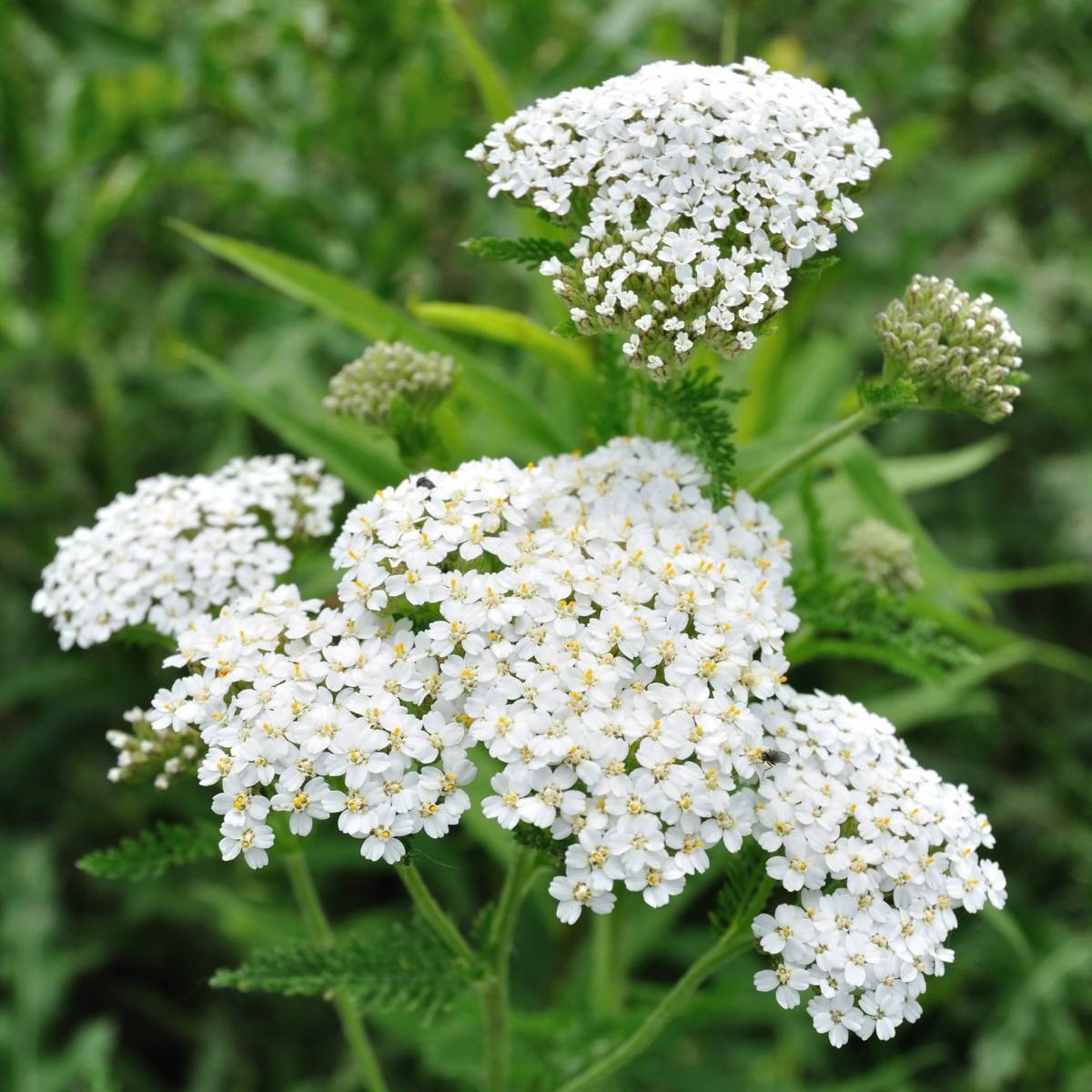
Yarrow
Achillea millefolium
Basic Information
🌿 Family: Asteraceae🗺️ Zone: 3-9
Other Names:
- Milfoil
- Soldier’s Woundwort
- Thousand-Leaf
🌡️ Ideal Temperature : 50°F – 85°F
🔥 Heat Tolerance: Up to 95°F
❄️ Cold Tolerance: Down to -40°F
🌱 Type: Perennial
Layers
- Herbaceous
Functions
- Medicinal
- Pollinator
- Wildlife Attractor
- Mulcher
- Dynamic Accumulator
- Erosion Control
- Border Plant
- Water Purifier
Pests
Description
Yarrow is a hardy perennial herb that grows up to 0.6–1 m (2–3 feet) tall. It features feathery, aromatic, finely divided leaves and small white, yellow, pink, or red flowers arranged in flat-topped clusters. Yarrow is drought-tolerant and thrives in poor, dry soils, making it an excellent low-maintenance plant for permaculture designs.
The plant spreads through underground rhizomes and self-seeding, forming dense patches over time. It is well known for its role in attracting beneficial insects and acting as a living mulch.
🌞💧 Sun and Water Requirements:
- Prefers **full sun** (6+ hours of sunlight).
- Requires **well-drained soil**, tolerates sandy and rocky conditions.
- Drought-resistant but benefits from occasional watering in dry climates.
✂️🫘 Methods to Propagate:
- **Seeds**: Sow directly in the garden in early spring or fall.
- **Division**: Separate clumps in spring or fall.
- **Cuttings**: Root softwood cuttings in water or soil.
🧑🌾👩🌾 When to Harvest:
- Flowers and leaves can be harvested **anytime during the growing season**, but are most potent when flowers first bloom.
- Dry leaves and flowers for long-term storage.
Purpose
Yarrow is an excellent addition to permaculture gardens due to its many beneficial functions:
- Medicinal: Traditionally used for wound healing, digestive aid, and reducing fevers.
- Pollinator: Attracts bees, butterflies, and other beneficial insects.
- Wildlife Attractor: Provides habitat and food for pollinators and predatory insects.
- Mulcher: Its dense growth suppresses weeds and adds organic matter to the soil.
- Dynamic Accumulator: Draws up nutrients from deep soil layers, making them available to other plants.
- Erosion Control: Helps stabilize slopes and prevent soil erosion.
- Border Plant: Used as an edging plant to define garden spaces.
- Water Purifier: Used for soil filtration and wetland restoration.